10 Types of Ticks in Georgia (With Pictures)
-
Patricia Dickson
- Last updated:

If you’re new to the state of Georgia, or even a long-time resident, it’s easy to assume that you only have to worry about ticks during the warm, sticky, humid months of the year. However, worrying about ticks isn’t seasonal in Georgia like in many other states.
Georgia’s mild, moist climate makes it perfect for year-round tick activity. It’s also important to note that there isn’t just one type of tick to worry about in the Peach state; there are a few types of ticks here. These ticks carry diseases, so it’s essential to identify them and be on the lookout for anything on your pets and your family.
There are 22 recorded species of ticks in Georgia. We will discuss the most commonly seen species in our guide below. After the list, we’ll give you advice on dealing with ticks and answer some common questions, so stay tuned for more after our list.
The 10 Types of Ticks in Georgia
1. Lone Star Tick (Amblyomma Americanum)
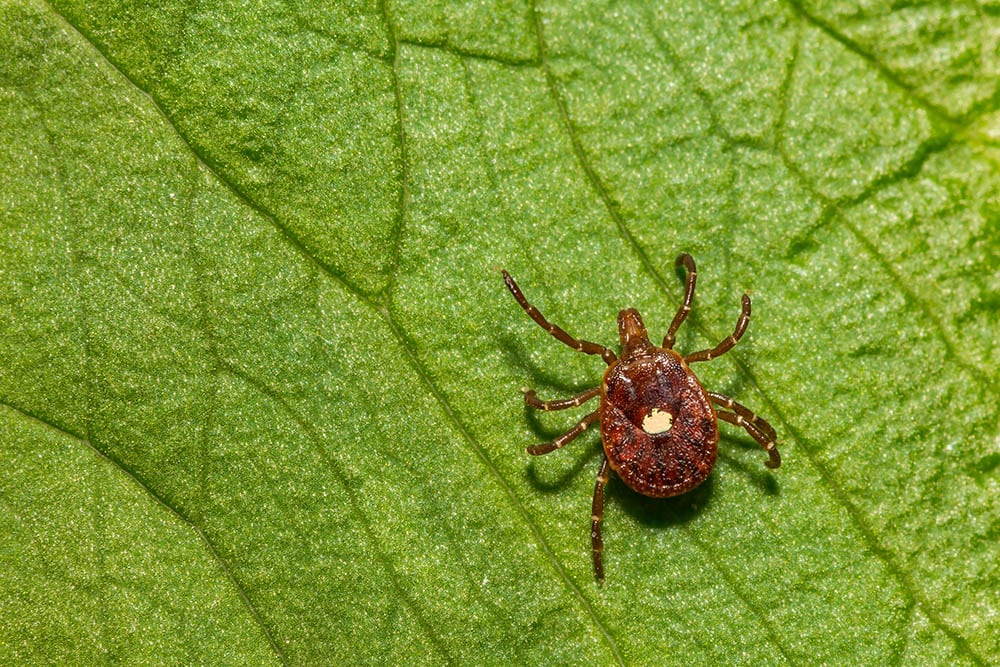
| Lifespan: | Depends on environment and host |
| Color: | Reddish-brown |
According to the Centers for Disease Control, the Lone Star Tick is a very aggressive species that bites humans, transmitting a bacteria that causes a host of diseases. The disease risk from the bite of this tick includes the Heartland virus disease, Ehrlichiosis, Tularemia, Bourbon virus disease, and Southern tick-associated rash illness.
The female is pretty easy to spot. She has a white dot, known as the lone star, on her back. Both the male and the female have an oval, flattened shape. The mouths of this tick are longer than other ticks on this list and top out at between 4 to 6 millimeters long. They prefer to feast on humans, dogs, deer, and livestock. However, they will attach themselves to rodents and birds as well.
When looking for signs of this tick, check your groin, butt, and lower extremities, because this is where they like to attach themselves. You’ll often run into this tick in shrubby low-lying flood plains, where most deer are found.
The Heartland virus is transmitted by the Lone Star Tick and is endemic to this state, with one in every 2,000 ticks being infected with this virus. This is also the most common tick that you will encounter in Georgia as a human.
2. American Dog Tick (Dermacentor variabilis)

| Lifespan: | 54–60 days |
| Color: | Brown to reddish brown |
As its name suggests, the American Dog Tick is a tick that prefers to feed on dogs. These are also called wood ticks, and you’re most likely to be bitten by the female of the species in the spring and summer. This is the tick that’s responsible for Rocky Mountain Spotted Fever.
Just because it prefers dogs doesn’t mean it doesn’t attach itself to anything else. They will feed on humans, raccoons, and any other medium-sized mammals in their vicinity. Search for this tick around your neck and head. It prefers to live in fields with shrubbery.
The ticks have a dark brown body, with the females having off-white spots and males having a mottled gray shield. They also have an oval, flattened shape.
3. Brown Dog Tick
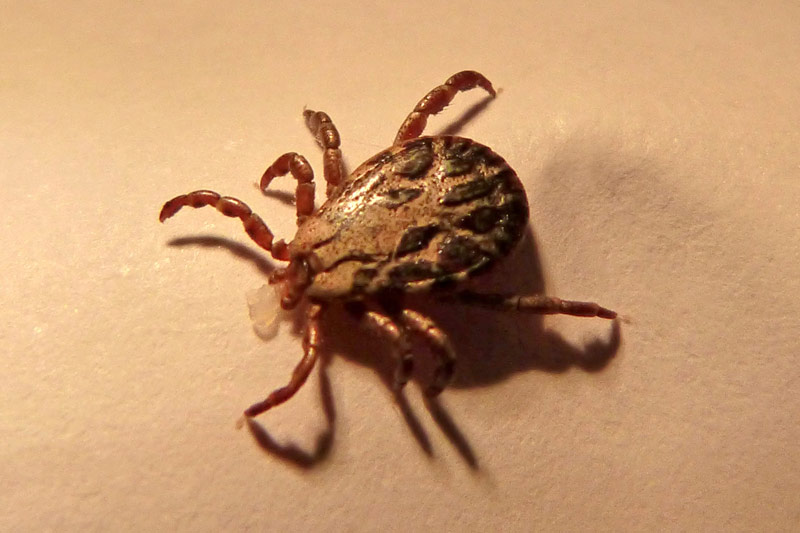
| Lifespan: | 18 months |
| Color: | Dark reddish brown |
Sadly, nowhere you live in the United States is safe from the Brown Dog Tick, including Georgia. These little creatures prefer living on your dog but will settle for attaching themselves to you instead. This reddish-brown tick turns a grayish-blue color when engorged on blood.
They have an oval, flattened shape and are commonly found in kennels. The scary thing about this tick is that it is strong enough to stand the dry conditions indoors so that they can set up shop inside your home. While this one doesn’t typically go for humans, it will if a canine presence isn’t available to feast on. It can carry the Rocky Mountain Spotted Fever.
4. Black-legged (Deer) Ticks
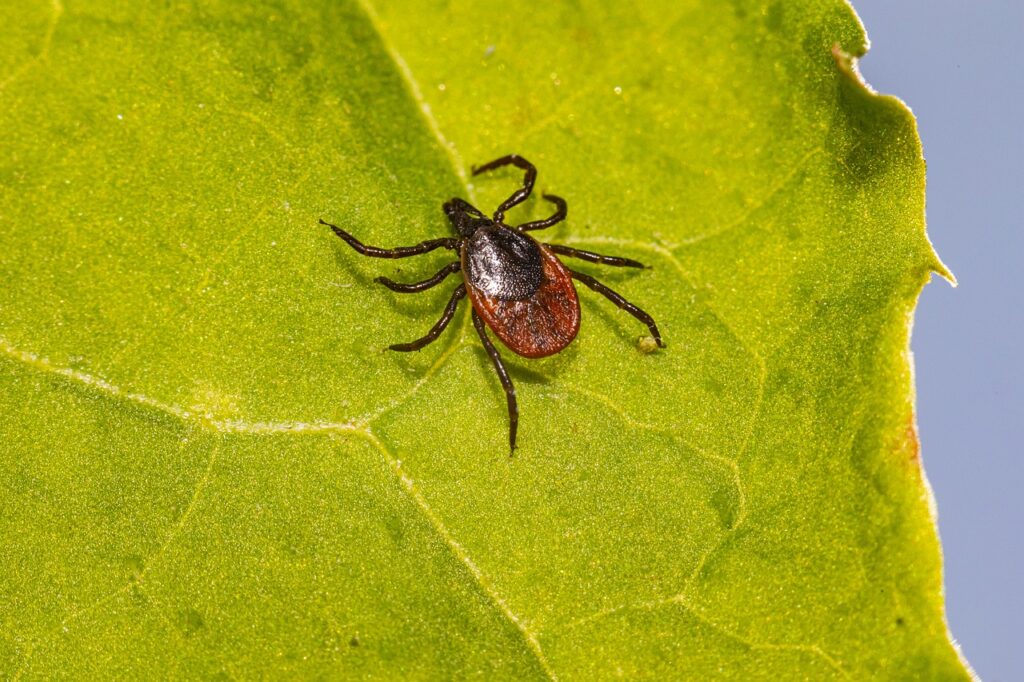
| Lifespan: | 2 years |
| Color: | Dark brown to black |
Black-legged Ticks are also known as Deer Ticks because they love to feed on White-Tailed Deer. It has eight legs and a flat, broad oval shape, with an orange, brown color and dark legs.
This tick carries and transmits Lyme Disease, so if you find one on you, it’s imperative to remove it and see your doctor. The Deer Tick likes deer but will also attach itself to humans, cats, and other medium-sized mammals. It also doesn’t have a preference for where it feeds on the human body. It’s best to stay away from areas where you think this tick may be found if possible. Check your cat regularly as well, to be safe.
5. Ixodes Minor
| Lifespan: | 3 years |
| Color: | Reddish brown |
The Ixodes Minor Tick is found mainly along the Southern Coast of Georgia and is also a carrier of Lyme Disease. There haven’t been enough studies completed to know how often these ticks attach themselves to the human population. They usually find host bodies in roof rats, Northern Cardinals, Northern Waterthrushes, Cotton Mice, Marsh Rice Rats, Carolina Wrens, and other rodents and birds.
6. Asian Long-Horned Tick
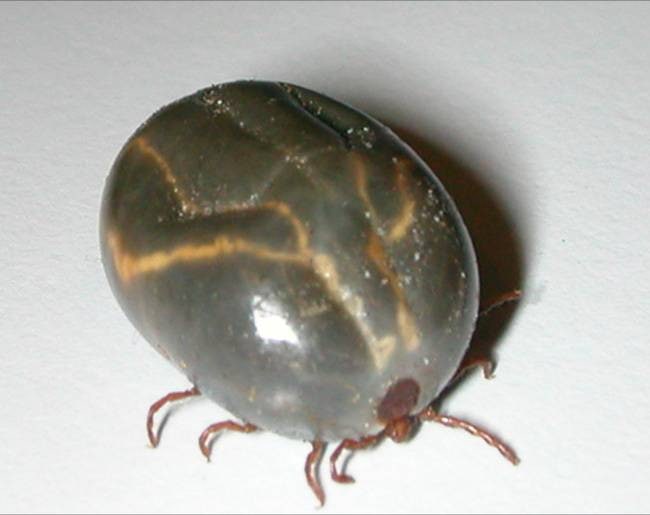
| Lifespan: | 6 months |
| Color: | Reddish brown |
The Asian Long-Haired Tick is an invasive species in the Peach State. The tick came here from Asia and was first reported in 2021. These ticks carry diseases in Asia that haven’t made their way to the United States. However, this is a cause for concern because the tick is also a known carrier of the Dabie Bandavirus.
This tick is attracted to livestock and doesn’t need to mate to reproduce, which also means it spreads much faster than other ticks on our list. These ticks attack livestock, and some have been known to die from blood loss.
7. Rabbit Tick
| Lifespan: | 3–4 days |
| Color: | Tan to reddish tan |
The Rabbit Tick is also known as the Grouse Tick, and as you might have guessed, they are typically found on rabbits. They have a deep reddish-tan appearance and very rarely bite people, though it has happened. They are found mainly in the forest. You can find these ticks on rabbits around their neck and between their ears.
8. Groundhog Tick
| Lifespan: | 1 year |
| Color: | Light brown, tan |
The Groundhog tick is primarily found near the coastline of Georgia and is also known as the Woodchuck Tick. It mainly feeds on Groundhogs, as you might have guessed. They will also feed on porcupines, foxes, cats, dogs, and raccoons.
This tick rarely bites humans, though it has been known to happen. It can also go over a year without feeding. If you live near the coastline, keep an eye on your pets and check them for this tick regularly.
9. Ixodes Brunneus
| Lifespan: | 2 years |
| Color: | Light to dark-reddish brown |
The Ixodes Brunneus Tick is mostly found feeding on birds but has been known to attach itself to the occasional Marsh Rice Rat. It’s rare for this tick to attach itself to a human to feed, though it has happened. You’ll find it mainly along the coast of Georgia, though they have been spotted occasionally throughout the state.
10. Gulf Coast Tick

| Lifespan: | 7 months |
| Color: | Reddish-brown |
The Gulf Coast Tick are carriers of the devastating Rocky Mountain Spotted Fever Virus. In most cases, you’ll find them feeding on deer. However, they will go after a human if the opportunity presents itself. They also feed on coyotes, cats, dogs, and cattle.
It is especially concerning when the tick feeds on cattle since it leaves a wound when it drops off the cattle, allowing flies to lay their eggs in the cow’s flesh. The result can be a devastating screwworm infection for the cow that could end in death.
Types of Ticks in Georgia: Prevention, Care, and FAQ
If you’re new to Georgia or just a long-time resident who didn’t realize there were so many types of ticks in the Peach State, then you might have many questions. We’ll answer a few and give you prevention tips below.
Are Ticks Bad in Georgia?
Ticks are considered vector pests, meaning they can transmit diseases such as Rocky Mountain Spotted Fever or Lyme Disease with a bite. Rocky Mountain Spotted Fever is one of the most common tick-borne diseases in the Peach State, and it’s best to take all precautions against getting bitten by one of the ticks on our list. Consider following these precautions when you’re going outside.
- Wear pants, closed-toed shoes, and long-sleeved shirts when outside
- Consider wearing light-colored clothes, so it’s easier to spot ticks
- Make sure your insect repellent is at least 20% DEET
- Avoid vegetation if you’re hiking and always stay on the main path
- Always check your pets, family, and yourself after spending time outside
- Wear a hat when outside; ticks love to burrow into the scalp to feed
When Is Tick Season in Georgia?
Georgia has a mild climate, and ticks are present all year. You’ll find that ticks are more common in the summer months, but they don’t die out during the winter. You can still find ticks on your pet or yourself, so be careful and vigilant no matter what season it is.
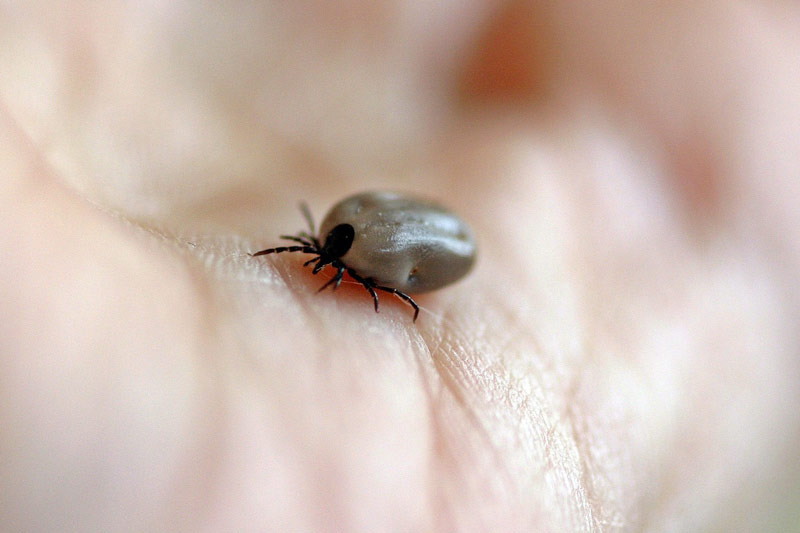
What Should You Do If You Find a Tick Feeding on You?
If you are out for the day, come home, and then find a tick has attached itself to you to feed, there’s a procedure to follow to remove it. You need to be careful and deliberate about the removal, however. The steps to follow are listed below.
- Pull back any body hair to expose the tick in a gentle motion.
- Take a pair of fine-tipped tweezers and grasp the tick firmly around the head. You’ll want to avoid grabbing the tick by its body as this can cause blood to be injected into your skin.
- Without wiggling or twisting the tweezers, pull the tick out of your skin using a straight motion.
- Wrap the tick in a tissue, then toss it in the trash can. If your can doesn’t have a lid, tie up the bag and take it to the dump immediately so the tick doesn’t get out.
- If, after removal, a rash begins to develop at the site of the tick bite, it’s best to contact your doctor right away for diagnosis and treatment.
Can You Call in an Exterminator for Ticks?
Yes, pet control companies in Georgia will spray your yard and home for a tick infestation. If you feel that you have an infestation, it’s best to call an exterminator as soon as possible to schedule treatment.
In Conclusion
As you can see, there are quite a few ticks in Georgia. Even though some of the ticks on our list don’t usually feed on humans, it has happened in rare cases. The ticks that do like to feed on humans in our list carry diseases such as Lyme Disease or the dreaded Rocky Mountain Spotted Fever.
It’s best to have pest control come in and spray your yard for ticks because ticks are a concern in Georgia all year long. If you find a tick on you, use the method described above to remove the tick right away. If you develop a rash or start feeling sick afterward, you will need to see your doctor immediately for diagnosis and treatment. Tick bites can be dangerous, so be vigilant and get help if you need it.
Featured Image Credit: Jerzy Górecki, Pixabay
Contents
